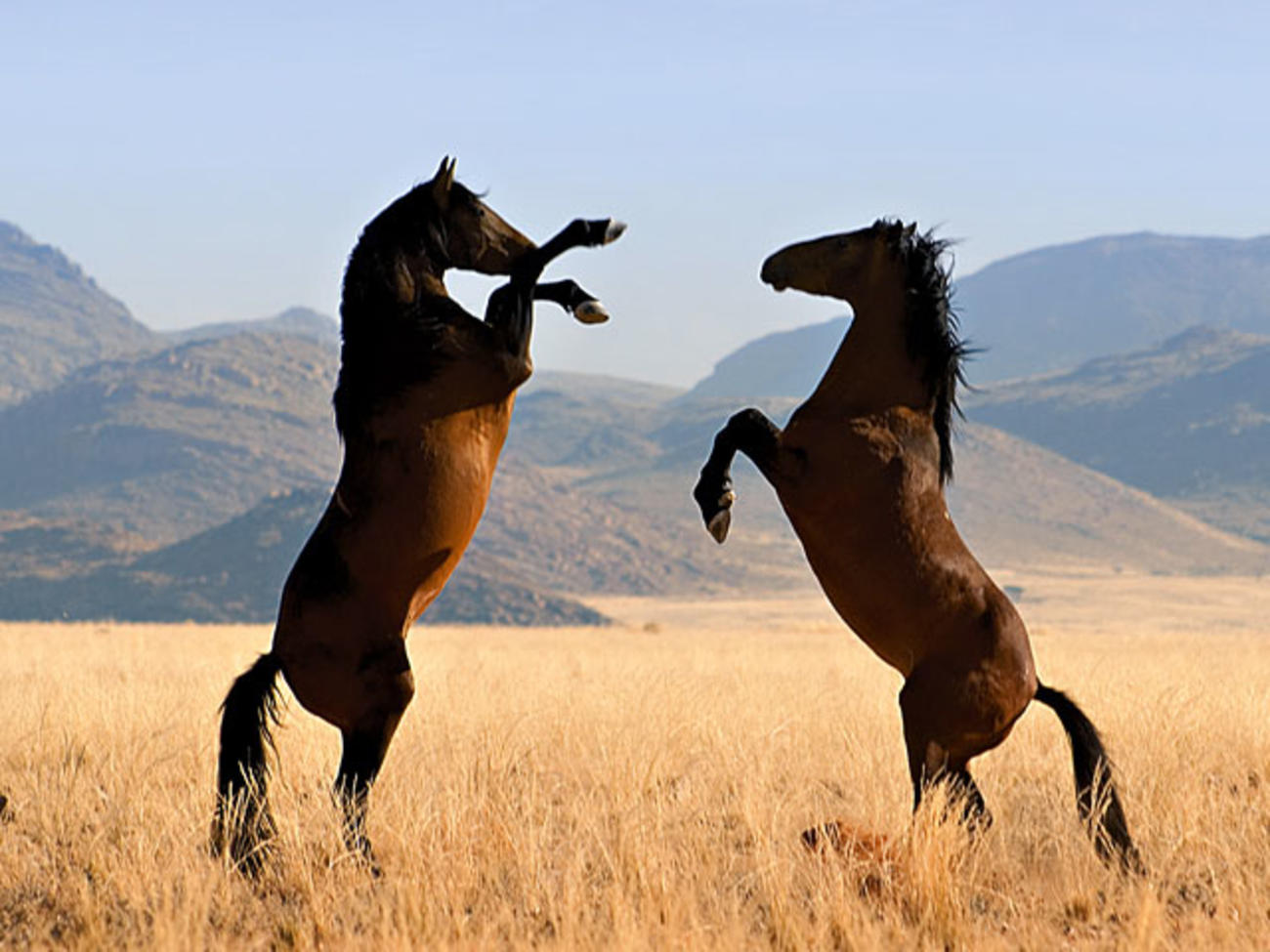Namibia’s spectacular landscapes are home to diverse wildlife and rich in game. With numerous wildlife opportunities available, from a wilderness safari in Damaraland to searching for black rhino and desert adapted elephants, we have highlighted below the very best this wonderful country has to offer.
Desert Adapted Elephants

Namibia’s desert adapted elephants are not actually a separate species of elephant, but have adapted to the desert environment in which they live. They are approximately the same size as savannah elephants, but with a smaller body mass, longer legs and wider feet – thought to be as a result of walking long distances on sand. Fully grown bull elephants can weigh up to 6 tons, whilst females are approximately half their weight. Desert-dwelling elephants are a high national and international conservation priority and inhabit the Kunene region, where the terrain mainly consists of sandy desert, rocky mountains and gravel plains. The elephants can go several days without drinking water and survive by eating moisture-laden vegetation.
Black Rhino

For more than 20 years, the Save the Rhino Trust (SRT) has worked to protect the last free-ranging rhino population on earth: the endangered desert-adapted black rhino. In the remote, rugged Palmwag Concession in Northern Damaraland, local trackers use camel trains to help research and monitor this animal. It is remarkable enough to venture into this harsh and utterly astonishing landscape, but to go in search of desert rhino offers one of the most moving wildlife encounters possible.
Big Cats at Okonjima

The cheetah is the world's fastest animal, yet the sad reality is that numbers have declined to an estimated 10,000 in the wild. The largest population is found in Namibia and at Okonjima you can see the tireless work of AfriCat, a non-profit organisation set up to conserve and protect threatened cheetah, leopard and other wild carnivores of Namibia. To date Africat have rescued more than 850 cheetahs and leopards from farmland and over 85% have been released back into the wild. They are also involved in key scientific research and educating local communities. Visitors get the opportunity to observe these magnificent endangered predators that are 'radio-tracked' from game-view vehicles and also to track rehabilitated cheetah on foot.
Safari Experiences in Etosha National Park

Etosha National Park boasts 5000km2 of some of the most unusual landscapes on earth, dominated by the Etosha Salt Pan, the remnant of a dried up lake thousands of years old. Sitting in silence around the waterhole in Etosha and spotting wildlife is at once a spiritual and a thrilling experience. The salt-pan desert is home to innumerable species of African wildlife such as lion, elephant, rhino, giraffe and black-faced impala. All of these magical elements combine powerfully to make Etosha one of the most magical, exotic and evocative places on earth.
Wild Horses in Aus

The small historic settlement of Aus is famed for its wild horses. Their home is the barren plains around Garub on the edge of the Namib Desert, where they have adapted to the arid terrain and harsh conditions. There are various theories about the origin of the horses, one dating back to the First World War, when it’s thought that bombs dropped on an enemy camp in Garub caused the dispersal of hundreds of cavalry horses. The soldiers were unable to catch them all and they have lived in the wild ever since. The horses are not usually aggressive, but have been known to harm one another through their interaction. A good place for spotting these legendary wild horses is from the Garub viewpoint.
Oryx

The oryx is the most common animal you’re likely to see in Namibia and is sometimes also referred to as the gemsbok, which can be found on Namibia's coat of arms. Oryx are often found living in arid open grasslands, but are very adaptable so can also be found in areas such as the sand dunes of the Namib Desert, the semi desert plains of the Kalahari and in the rocky areas of western Namibia. Whilst oryx eat a vegetarian diet of leaves, flowers and grass, they often fall prey to predators such as lions, cheetahs and wild dogs. Their features are striking, with distinctive black and white markings on their face and horns on both cows and bulls; these horns can be lethal as oryx have been known to kill lions with them. Their physical make-up also allows them to survive without water for long periods and even newborn calves can run as soon as they are born.
Hippos and Crocodiles in the Caprivi Strip

The Caprivi Strip, formerly known as Itenge, is a narrow strip of Namibia eastwards from the Okavanga region with Angola and Zambia to the north and Botswana to the south. It is a tropical, wet stretch of land, often distinguished by its round huts. The Caprivi Strip has three protected areas and hippos and crocodiles can be found in all of them. Mahango National Park is a particularly good place to spot large numbers of crocodiles and hippos and the general climate of the area offers ideal conditions for survival and breeding.
